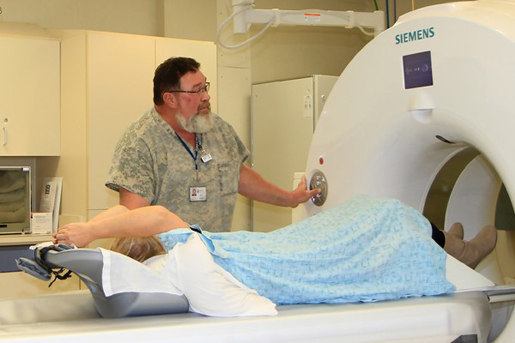What is a low dose CT scan?
December 14, 2021
A computed tomography scan is a kind of diagnostic imaging test. More commonly called CT scans, these tests take a series of X-rays and then process them to produce cross-sectional slices, which are far more detailed than traditional X-ray images. While these scans rely on radiation, there is a low-dose CT scan available for use in capturing images of the chest, used to scan for signs of lung cancer.
Every day in the U.S., an average of 425 people die from lung cancer. It’s the leading cause of cancer death for men & women in the U.S., more than colon, prostate, ovarian, and breast cancers combined. Catching it early improves survival rates. Screening may reduce the need for chemo or radiation, and offers a chance for minimal surgery.
People ages 55 to 80 years old who currently smoke, people who have quit smoking within the past 15 years, people who have a history of smoking at least one pack a day for 30 years (or two packs a day for 15 years), and those who have a family history of lung cancer, are especially at risk. Additionally, those with lung diseases such as emphysema, chronic bronchitis, or COPD, have elevated risks. Or, if you have worked with such known carcinogens as asbestos, arsenic, nickel, or chromium, you have a higher risk of developing lung cancer.
Screening can save lives. The best and easiest way to screen for lung cancer is with a low-dose CT scan. It not only screens high-risk patients and reduces the number of deaths from lung cancer by 20%, but it also helps locate small cancers earlier than traditional x-rays. You don’t need contrast dye injected into your bloodstream and the radiation dose is lower than regular CT scans.
Mille Lacs Health System has a low-dose CT scan available for patients. If you are interested in learning more about this test, visit with your medical provider, who will explain more about it and help you evaluate your risk and need for a low dose CT scan.
